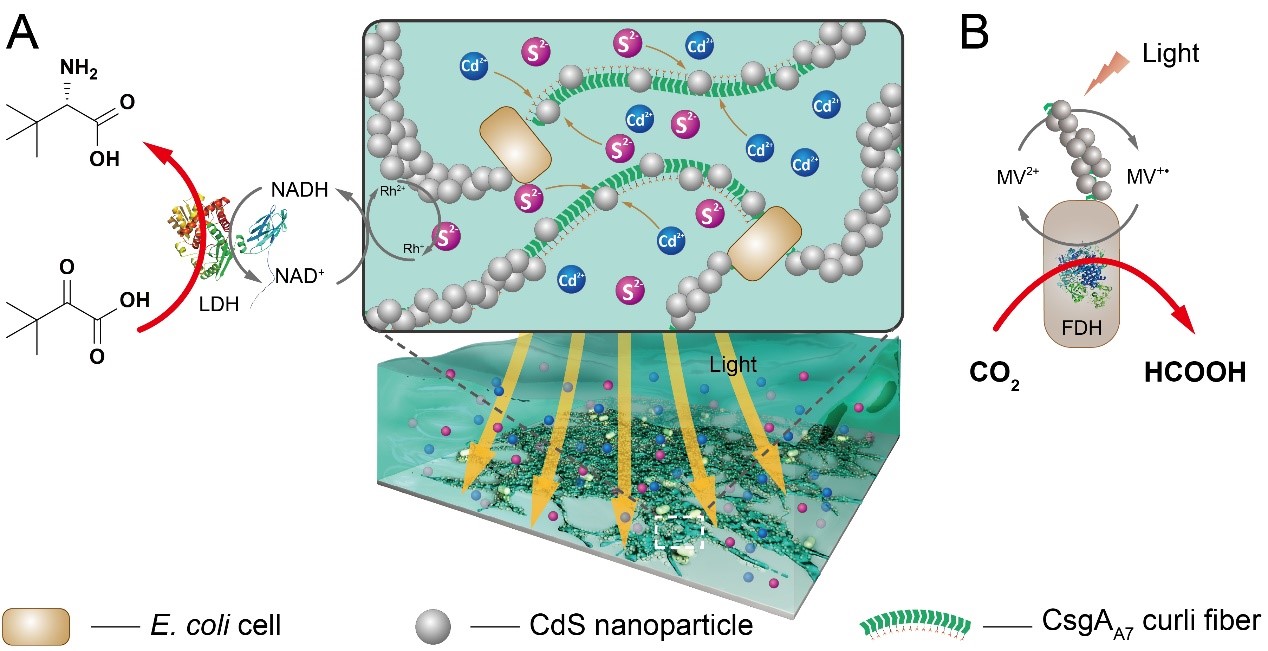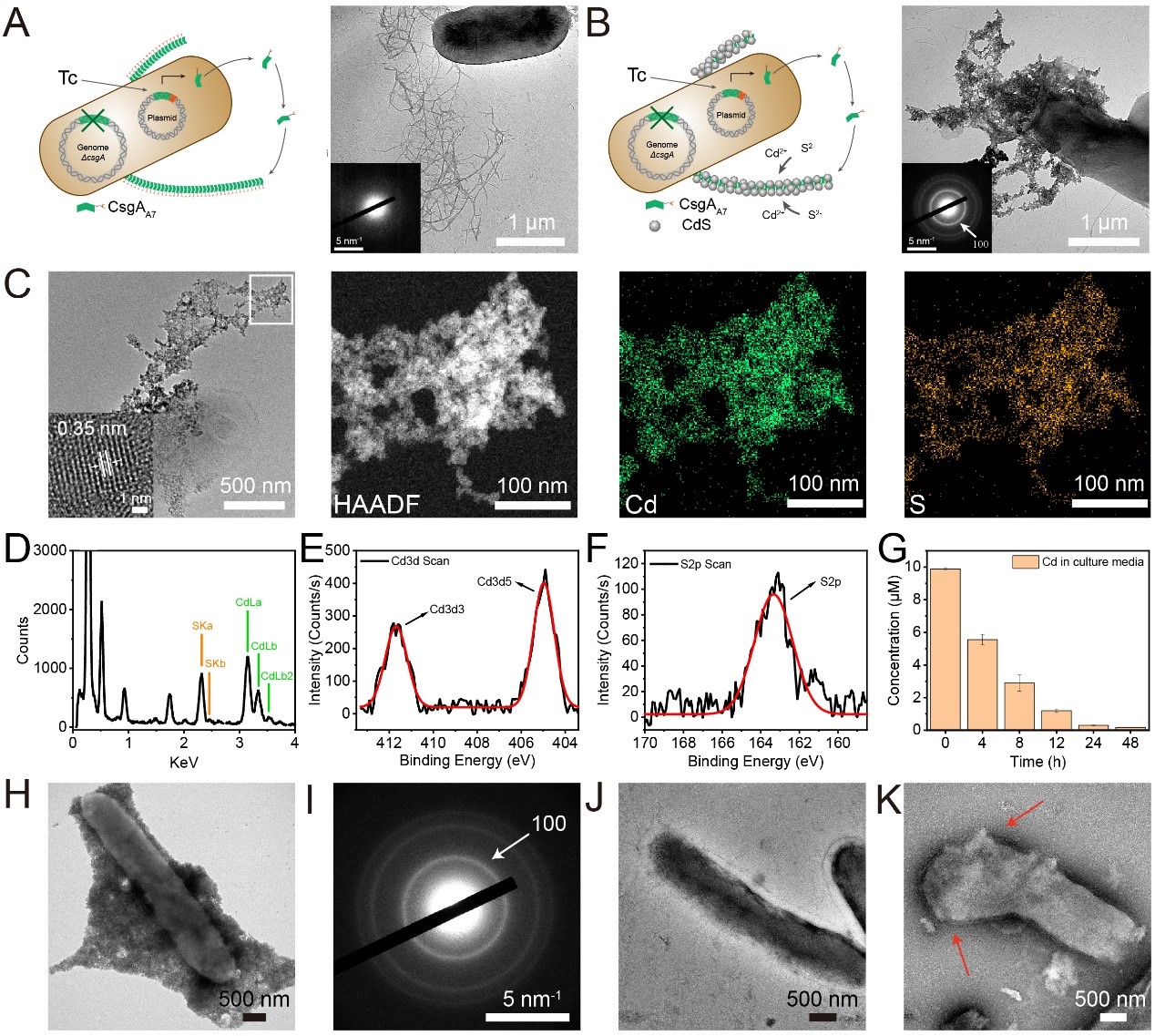Bacterial Biofilms Facilitate Biocompatible Bio-abiotic Interfaces for Semi-artificial Photosynthesis
Date:07-05-2022 | 【Print】 【close】
Semi-artificial photosynthesis integrates the high selectivity of living biosystems and broad-range light-harvesting of semi-conductive materials, which enables sustainable light-driven chemical production. The bio-abiotic interfaces between living cells and semiconductors are key for the realization of semi-artificial photosynthesis.
Through cell membrane immobilization or intracellular uptake of semiconductors, light-driven fixation of CO2 to commodity chemicals have been achieved. Whereas, the direct contact would cause impair to living cells, which impedes their sustainability. Thus, the ideal bio-abiotic interfaces were still unresolved challenges due to functional differences between biological and inorganic semiconductors.
Recently, a research team led by ZHONG Chao from the Shenzhen Institute of Advanced Technology (SIAT) of the Chinese Academy of Sciences proposed the usage of photocatalyst-mineralized biofilms as living bio-abiotic interfaces to implement diverse photocatalytic applications.
The research was published in Science Advances on May 7.

Fig. 1 Schematic of living bio-abiotic interfaces for single enzyme to whole cell photo-catalysis. (Image by SIAT)
Biofilms are natural consortia embedded within the slimy extracellular matrix. Due to their superior resilience to external environmental stresses, biofilms have been adopted for the design of engineered living materials (ELMs) with applications in underwater adhesion, catalyst immobilization and medical therapy.
The researchers adopted E. coli biofilms with amyloid curli fibers. A7 peptides were first fused to curli subunit CsgA protein to create CsgAA7 nanofibers. It endowed biofilms with capability of in situ mineralization of CdS nanoparticles (NPs).
The photocatalyst-mineralized biofilms were obtained and directly used in photo-catalytic applications after cultivation. Through segregation of CdS NPs from bacterial cells, the system could retain the catalytic property as well as alleviate the impairment.

Fig. 2 Characterization of photocatalyst-mineralized biofilms. (Image by SIAT)
To demonstrate the resistance of biofilms, researchers constructed another strain to display A7 peptides on cell membranes, which enabled mineralization of CdS NPs on cell membranes. The photocatalyst-mineralized bacterial cells were used as controls. After irradiation for 24 hours, the cells in photocatalyst-mineralized biofilms were almost integral, while the controls exhibited partial damage or even fractures.
"The results indicated a biocompatible bio-abiotic interface by mineralized biofilms," said Prof. ZHONG Chao, the corresponding author of the study, "it could promote the sustainability of semi-artificial photosynthesis in principle."
Compared with planktonic cells, biofilms featured with larger surface area, stronger environmental resistance, and easier functionalization, which made them superior chassis for the design of semi-artificial photosynthesis. And the success of semi-artificial photosynthesis have potential to solve future energy and environmental problems.

Fig. 3 The protection effect of engineered biofilms. (Image by SIAT)
Media Contact:
ZHANG Xiaomin
Email:xm.zhang@siat.ac.cn